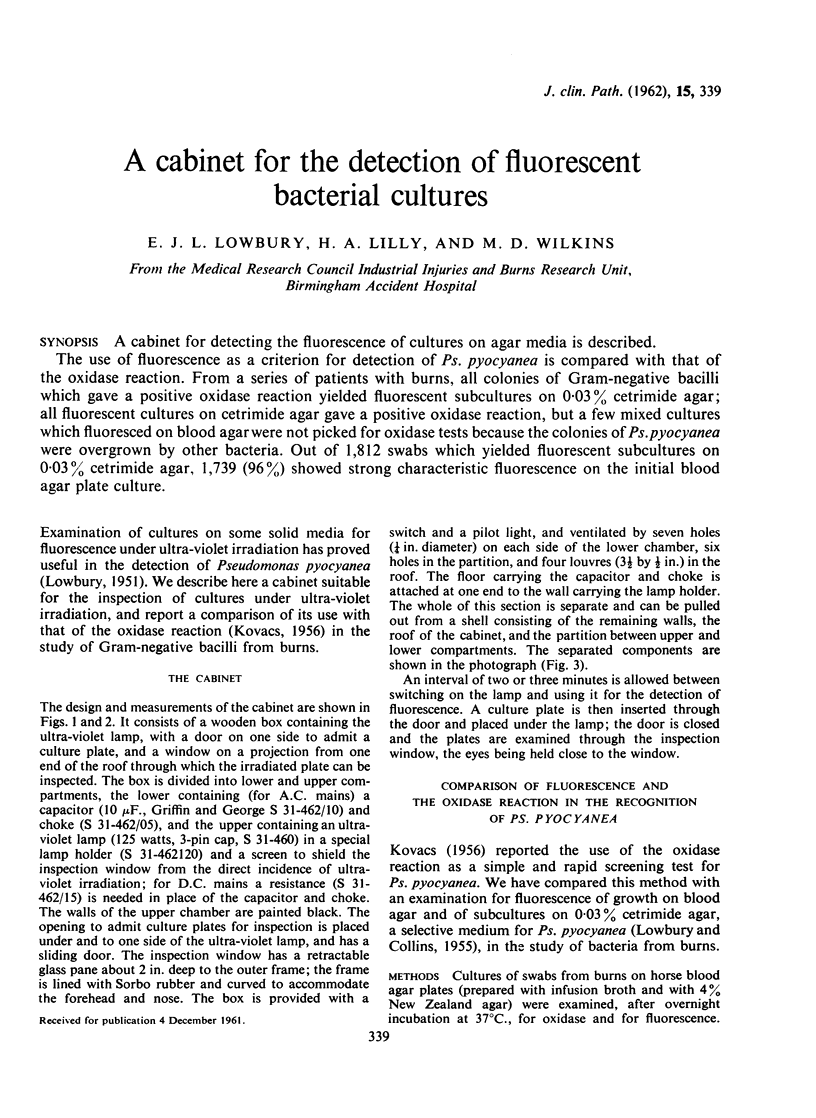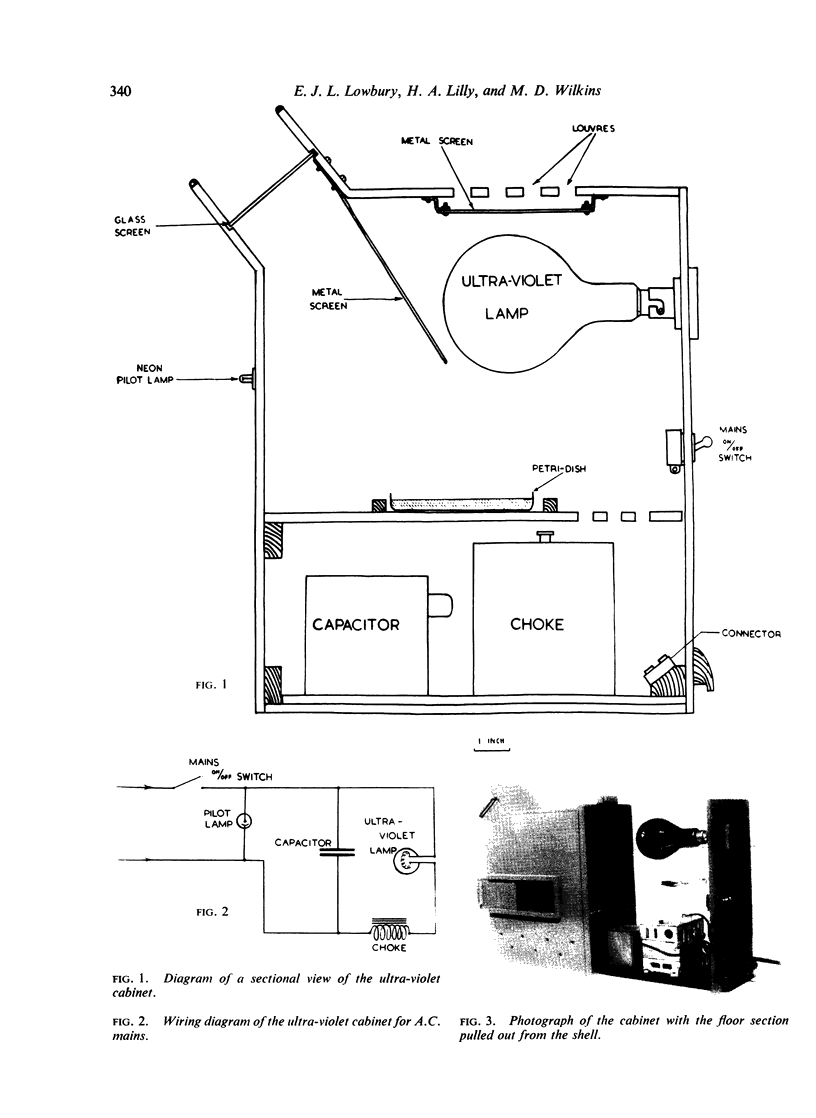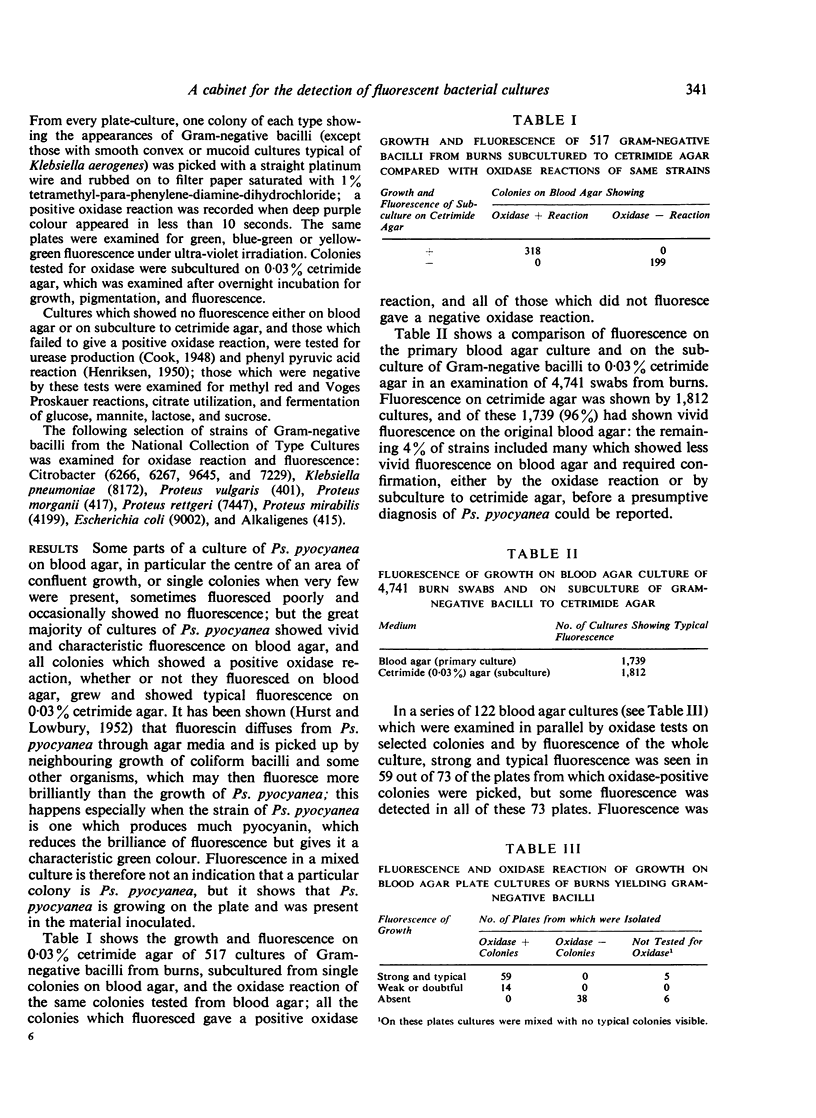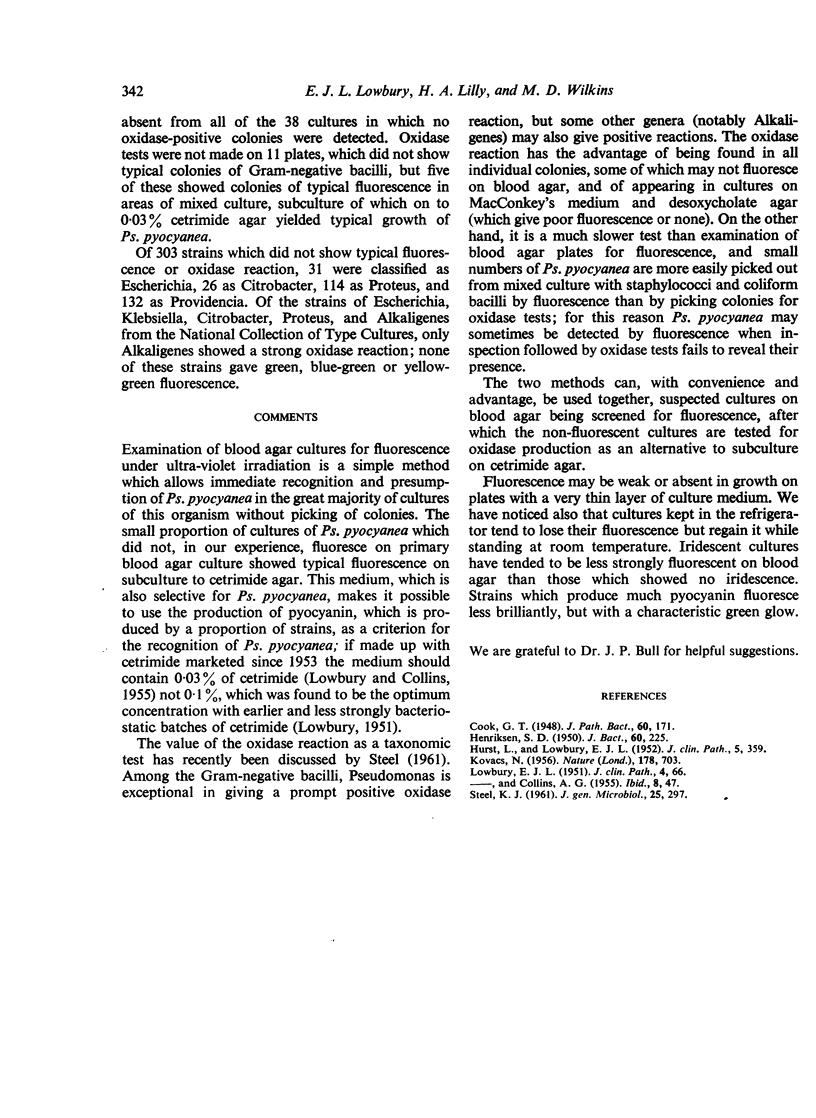Abstract
A cabinet for detecting the fluorescence of cultures on agar media is described.
The use of fluorescence as a criterion for detection of Ps. pyocyanea is compared with that of the oxidase reaction. From a series of patients with burns, all colonies of Gram-negative bacilli which gave a positive oxidase reaction yielded fluorescent subcultures on 0·03% cetrimide agar; all fluorescent cultures on cetrimide agar gave a positive oxidase reaction, but a few mixed cultures which fluoresced on blood agar were not picked for oxidase tests because the colonies of Ps. pyocyanea were overgrown by other bacteria. Out of 1,812 swabs which yielded fluorescent subcultures on 0·03% cetrimide agar, 1,739 (96%) showed strong characteristic fluorescence on the initial blood agar plate culture.
Full text
PDF



Images in this article
Selected References
These references are in PubMed. This may not be the complete list of references from this article.
- HENRIKSEN S. D. A comparison of the phenylpyruvic acid reaction and the urease test in the differentiation of Proteus from other enteric organisms. J Bacteriol. 1950 Sep;60(3):225–231. doi: 10.1128/jb.60.3.225-231.1950. [DOI] [PMC free article] [PubMed] [Google Scholar]
- HURST L., LOWBURY E. J. L. Transfer of fluorescin from Ps. pyocyanea to colonies of other bacteria. J Clin Pathol. 1952 Nov;5(4):359–360. doi: 10.1136/jcp.5.4.359. [DOI] [PMC free article] [PubMed] [Google Scholar]
- KOVACS N. Identification of Pseudomonas pyocyanea by the oxidase reaction. Nature. 1956 Sep 29;178(4535):703–703. doi: 10.1038/178703a0. [DOI] [PubMed] [Google Scholar]
- Lowbury E. J. Improved Culture Methods for the Detection of Ps. pyocyanea. J Clin Pathol. 1951 Feb;4(1):66–72. doi: 10.1136/jcp.4.1.66. [DOI] [PMC free article] [PubMed] [Google Scholar]



